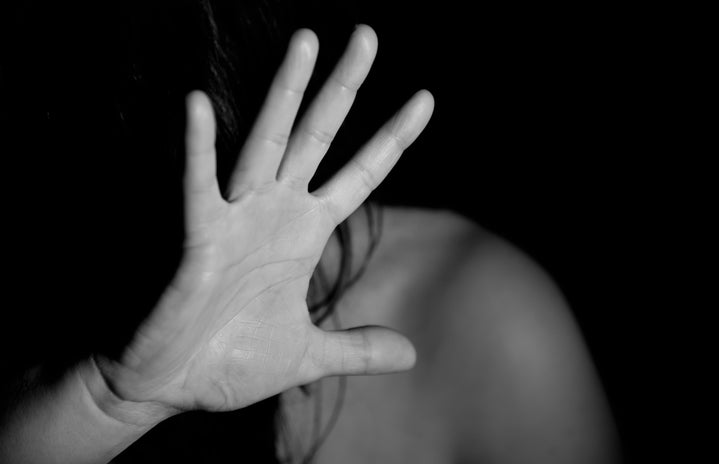For my leadership course this semester, I have been asked to create a PSA about any topic of my choice. I have chosen to write an article series about stalking and domestic violence in the US. This is very different from my typical article, but I hope you enjoy it nonetheless. For my second article, I wanted to discuss domestic violence and answer some important questions about the topic.
What is Domestic Violence?
Domestic violence is a pattern of behaviors used by someone, typically a romantic partner, in order to gain and maintain power over the other partner. Domestic violence can happen to anyone, no matter their race, sexual orientation, age, or marital status.
Signs of an abusive relationship include but are not limited to:
-
Telling you that nothing you do is correct
-
Jealousy towards friends and family , especially when spending time apart
-
Discouraging you from seeing friends and family
-
Insults, name calling, demeaning behavior
-
Controlling all money in the household
-
Intimidation, both physically and emotionally
-
Doesn’t allow you to make decisions
-
Stops you from going to work or school
-
Destroys your property
-
Threats towards friends, family, and pets
-
Pressure to have sex, use drugs, or drink alcohol
-
Threats made with knives, guns, or other weapons
There are many more signs of abusive relationships, but these are some of the most common to be reported. Domestic violence is mental just as much as or sometimes more than violent, but it isn’t portrayed in the media as frequently. Abusers use these tactics to break their victims down so they feel like they can’t leave. Their goal is to maintain power and they do that by any means necessary.
How Common is Domestic Violence?
-
1 in 4 women and 1 in 7 men aged 18+ have been the victims of severe physical violence from an intimate partner.
-
48.4% of women in the US have experienced psychological aggression by an intimate partner.
-
The highest rates of domestic violence victims are among females ages 18-24 and 25-34.
-
Most female victims of domestic violence, 78%, were previously victimized by the same offender.
How Does Domestic Violence Affect Children?
Up to 10 million children and adolescents witness domestic violence between their parents or caregivers each year. Even if the child is not abused or doesn’t directly witness the abuse, they can still be greatly affected by their environment. Children pick up on a lot more than we give them credit for. When there is conflict in the household, children almost always pick up on it and the stress can lead to many adverse symptoms.
Symptoms in children include:
-
Anxiety and fear
-
Depression
-
Loss of interest in hobbies and friends
-
Difficulty sleeping, nightmare, bedwetting
-
Aggression and anger (mimicking what they see and also to gain attention)
-
Changes in appetite
Symptoms in adolescents include:
-
Drug and alcohol abuse
-
Skipping school
-
Changes in friend groups
-
Rebellious behavior, disobeying parents/guardians and teachers
-
Declining grades
-
Social withdraw
-
Depression
-
Anxiety
-
Loss of interest in hobbies and friends
These symptoms are very serious and can affect children and adolescents long term. Group therapy, one on one therapy, and medication can all assist in relieving the symptoms. The most important thing is that the kids are evaluated and treated so that they can feel safe again.
What are the Mental and Physical Repercussions of Domestic Violence?
Victims of domestic violence, both male and female, can also experience symptoms ranging from mild to severe during and following domestic violence.
The physical symptoms include:
-
Bruising on the face, arms, legs, and back
-
Red or purple marks around the neck
-
Sprained or broken wrists
-
Fatigue
-
Shortness of breath
-
Muscle tension (from injury and stress)
-
Involuntary shaking
-
Sexual dysfunction
-
Menstrual cycle or fertility issues in women
The mental symptoms include:
-
PTSD (flashbacks, nightmares, severe anxiety, uncontrollable thoughts)
-
Depression
-
Anxiety (general and on a triggered basis)
-
Low self esteem
-
Suicidal thoughts
-
Alcohol and drug abuse
Domestic violence is very serious and very dangerous. On average, victims attempt to leave seven times before leaving their abuser for good. Escape is difficult and dangerous but there are resources in place to help victims and their children. For more information and resources visit https://www.thehotline.org/.



